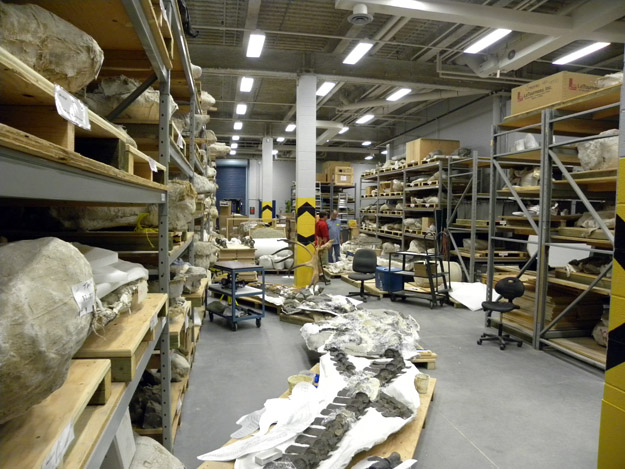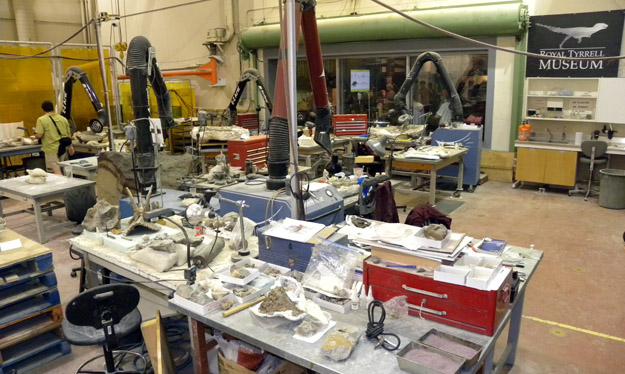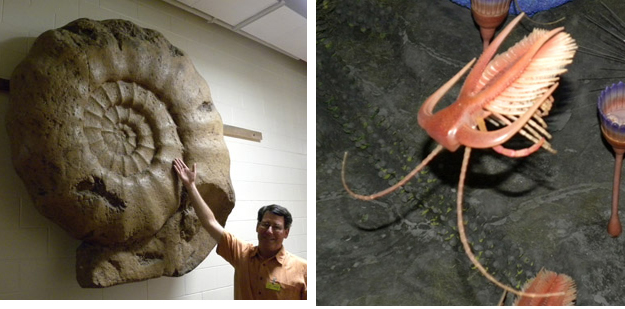DRUMHELLER, ALBERTA, CANADA–The last activity for our IPREP group this summer was a guided visit to the Royal Tyrrell Museum of Palaeontology. David Lloyd, a paleontological technician at the museum, gave us a fantastic “behind the scenes” tour of the preparation laboratories and collections. The emphasis of the museum and the town is dinosaurs, of course, and I’ve never seen a better collection up close, but there were plenty of invertebrate fossils as well. The museum has one of the best exhibits on the Burgess Shale in the world, including a giant diorama visitors essentially walk into.
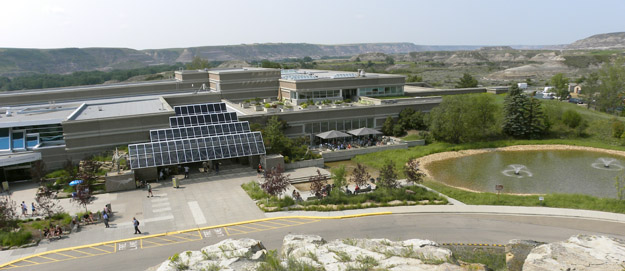
The Royal Tyrrell Museum of Palaeontology sits in a basin with badlands exposures of dinosaur-loaded Late Cretaceous terrestrial sediments.
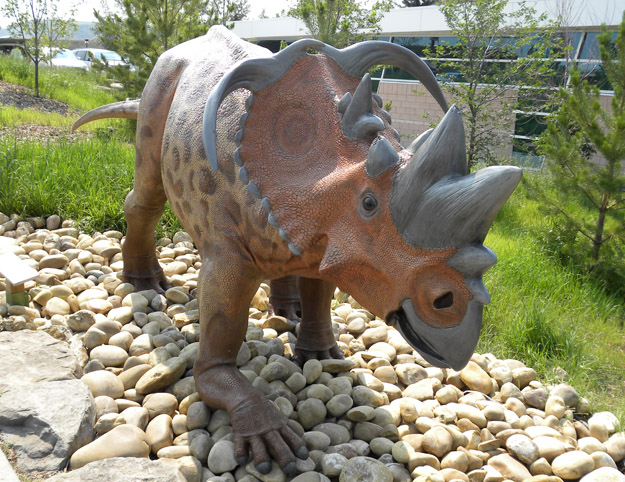
The dinosaur reconstructions inside and outside the museum are very well done. This is a Cretaceous pachyrhinosaur with fearsome ornamentation.
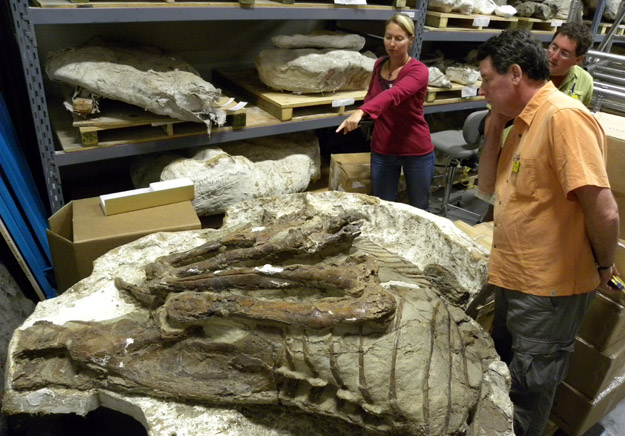
Rebecca Perlman, Matt James, and Kurt Burmeister (in the back) examine an opened plaster jacket with dinosaur fossils inside awaiting preparation. Layers of plaster and burlap were applied to the fossils in the field to protect them during transport to the museum. This technique goes back over a century.



